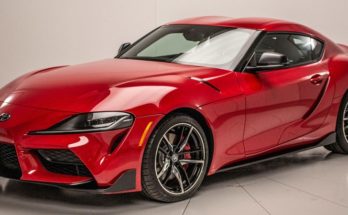The Ford Model T is hardly the first motor vehicle to make an appearance on the open road, but it does hold the distinction of being the first affordable automobile, the one that made it possible for the average person to explore long distance. Part of the reason for this were the changing practices in the automotive industry, led by the Model T’s own patriarch, Henry Ford. With faster build times and more strict adherence to mass market procedures, the car became so popular that it is still on the top ten list as one of the most sold cars in the history of the industry (over 16 million were sold).
Led by Henry Ford’s vision for a family-friendly vehicle that would appeal to the masses, the Ford company (with designers Eugene Farkas, Joseph A. Galamb, Peter E. Martin, Henry Love, C.J. Smith, Gus Degner, and Childe Harold Willis) began production in 1908. In 1927, Henry Ford watched as the 15 millionth vehicle was completed. Though there were no model year categorizations used at the time, generally historians break the models into five generations, noting primarily the changes in the hood and cowl area of the vehicle.
The engine was front mounted, with a unique ignition system that was capable of handling multiple types of fuel, such as kerosene or gasoline. Though it boasted a “three-speed” transmission, one of those was technically ‘reverse’, so today’s experts would instead consider it a two-speed. The transmission bands themselves were crafted from cloth or wood, with the wood giving the driver the ability to feel the grip on the wheel.
Though originally the Model T was sold in a small variety of colors including red, green, and blue, Ford insisted early on during its production that they stick to only black, partially because of the rising costs and inefficient chemical standards of the time. During the first World War, in fact, the sources for dyes shrank, and the color palette was limited. Later, in the mid-1920’s, lacquers became popular because of their wide range of dry times, coating (fewer coats to paint meant keeping the cost down), and durability.
One of the unusual aspects of the Model T is that it was built in a time when there were few, if any, portable engines or power tools. Ford realized this and ensured that the Model T could be used as more than just a touring or family vehicle. It could also double as a tractor or hauler, or be paired with other farm equipment to allow farmers to harvest, bale, or pump. Other companies and individuals also converted the Model T for other uses, such as an armored car, tractor, or snow vehicle.
While it may not have been the original car, the Model T is perhaps the best remembered of early vehicles, and remains in the global public consciousness even today. It was the first vehicle sold around the world, with production plants in North and South America, Europe, and Asia. There are still around 50,000 Model T’s in North America that are roadworthy, so don’t be surprised if you see one drifting by someday.


